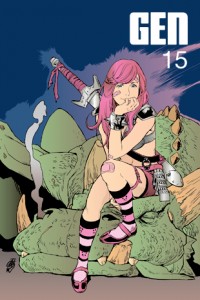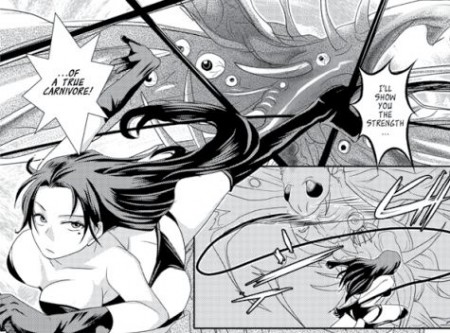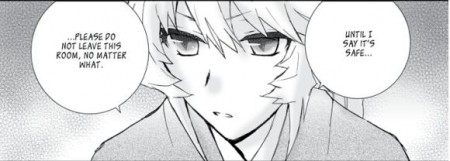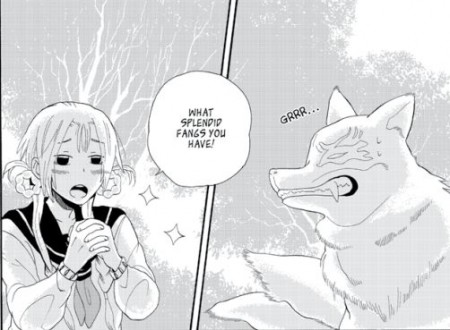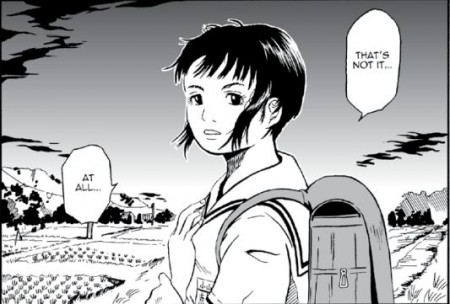GEN 15 Review
The 15th issue of doujin manga anthology GEN is now available. This month’s issue introduces Aji-ichi’s serial “Flavor” and includes the latest chapters of ongoing underground manga Psycho, Android Angels, One is Enough, Stones of Power, Anomal, and Alive. Read on for my review of the issue, and be sure to drop by GEN Manga’s booth at this year’s New York Comic Con. Nagumo, author of the “Let’s Eat Ramen” story that appeared in GEN issue 8 will be on hand to sign autographs.
Issue 15 launches with the premiere chapter of Aji-ichi’s school dramedy serial “Flavor.” Veteran otaku may immediately notice that the attractive shoujo-style art resembles the work of artist Shinobu Ohtaka – particularly Aji-ichi’s tendency to switch between normally proportioned characters and super deformed characters for comedic effect. Readers may also immediately recognize a narrative lineage to stories like Kimi ni Todoke and Yamato Nadesico Shichihenge that revolve around schoolgirls ostracized because of their gloomy appearance and introspective temperament. However, sticking with the first chapter reveals that “Flavor” has some interesting narrative developments in mind, applying some unexpected plot turns to the familiar tropes. The art design is attractive, making good use of screen tones to add depth, fine line work to create attractive characters, and plenty of visual detail and creative incorporation of sound effects to jam pack a lot of visual impact into the panels. During its first few pages, “Flavor” seems to aim for mediocre redundancy, but by the end of the first chapter, the story does a lot to begin establishing its own identity and providing readers with a fun, unpredictable tale.
Lumo’s apocalyptic romantic tragedy Psycho has been an odd beast from the outset, but its third chapter is by far its most eclectic. This month’s lengthy installment of the story is a dizzying cornucopia of ostensibly conflicting themes and styles. The third chapter includes graphic nudity, non-graphic sexual assault, sly gay humor, extreme & horrific gore, provocative political intrigue, and practical fan-baiting parody. The visual art shifts from its normal design to elevated abstraction to recreation of highly stylized ancient ukiyoe. The dialogue likewise contains some strong profanity as well as highly formalized speech that sounds just as pretentious as it attempts to convey unique characterization. Conventional wisdom would be hard pressed to call this chapter “good,” but reminiscent of the wildest 1980s anime that included everything but the kitchen sink, this chapter of “Psycho” is so over-the-top, so sheerly bizarre that it manages to be a fascinating and memorable reading experience.
With humor and charm, Kosuke Kabaya’s sci-fi serial Android Angels continues to explore the practical & philosophical relationship between humans and artificial humans. The latest chapter introduces an intriguing contrast between a particularly robotic human being and an android trying her best to express humanity. The dichotomy is depicted subtly in an intelligent and amusing way, largely through dialogue. Regrettably, this chapter merely establishes the setting and characterizations before concluding for the month. Kabaya’s art design occasionally continues to reveal some odd perspective and noticeable absence of detail. But at the same time, this latest chapter demonstrates his developing artistic expertise with excellent panel layout, evocative background art, and lovely art design on the androids he’s now so experienced drawing.
The yaoi fans will adore the delicious drama ripe in the latest chapter of Love’s boy-love serial “One is Enough.” As one relationship seems to end, a new one appears to begin. The latest chapter introduces plenty of teen sexual identity angst, existential isolationsim, and subconscious homoeroticism. The chapter also includes some mild graphic homosexuality and a little bit of strong language. The art design retains its flowery shoujo-esque look, but character rendering stay more consistent as the artist’s skill seems to improve with experience.
In a regrettably short and very brisk new chapter, Isora Azumi’s supernatural drama “Stones of Power” reveals itself to be a more intriguing and complex story than previously suggested. The latest chapter also takes the story into territory much darker and morbid than previous chapters, despite the story’s progressive movement from lighthearted comedy toward a more serious, dramatic, and morose tone. This excellent chapter rouses excitement and leaves the reader eagerly anticipating more with its intense story, attractive art, and introduction of supernatural action scenes.
The latest chapter of Nukuharu’s supernatural comedy “Anomal” takes cues from stories including Suzumiya Haruhi no Yuutsu, Nurarihyon no Mago, and Natsume Yujincho yet creates its own unique and very amusing tale about a school girl that wants to become a lord over yokai yet has no idea that such a power even exists. The narrative character introductions and development are energetic and fun, but the effect is slightly compromised by the chapter’s rather stilted art. Character movements are depicted stiffly, and narrative transition between panels feels hurried, as though the artist was too eager to tell his tale instead of letting it develop at its own, natural pace. However, provided the reader can overlook small weaknesses, the art design and narrative are both substantial enough to make the chapter rewarding and enjoyable to read.
In true underground manga fashion, the “Red Rice” chapter of Hajime Taguchi’s regularly powerful serial “Alive” is a highly evocative nostalgic budding love story that both looks and feels like a masterful manga from forty years ago, magically transposed into the present. Readers with a preference for conventional, commercial manga may find “Red Rice” offputting or uninteresting, but readers with an appreciation for excellent sequential art storytelling will immediately find themselves drawn into the story by its strong characterizations and phenomenally evocative design that captures all the right details and creates a totally immersive atmosphere. This fantastic endcap wraps up GEN issue 15 beautifully and justifies any investment in the issue by itself, even independent of the remainder of the issue’s excellent content.
